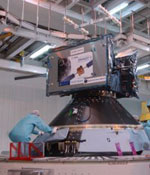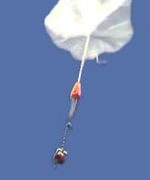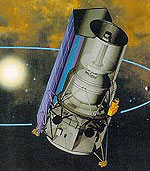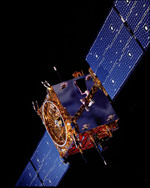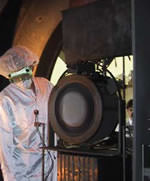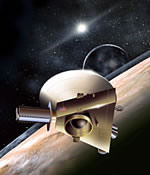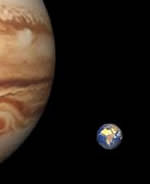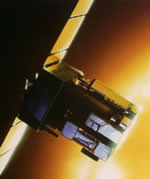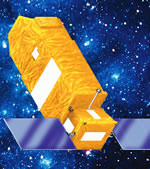
Image credit: NASA/JHU
NASA’s Far Ultraviolet Spectroscopic Explorer (FUSE) satellite got a complete software upgrade this week to improve the precision of its observations. Software engineers from several groups have been working for two years to upgrade the software for the Attitude Control System, the Instrument Data System, and the processor on the Fine Error Sensor guide camera. The new software will even let the observatory work if some or all of its gyroscopes fail.
NASA’s Far Ultraviolet Spectroscopic Explorer (FUSE) satellite was given a new lease on life following the successful implementation of new software in three computers that work together to control the precision pointing of the telescope.
“We have uploaded new flight software, and can operate FUSE with any number of gyroscopes, including none, if the time comes that all of our gyroscopes fail,” said Dr. George Sonneborn, FUSE project scientist from the NASA Goddard Space Flight Center (GSFC), Greenbelt, Md. “This is a significant conceptual and technical development that brings a new tool to the designers of new and existing satellites, and bodes well for continued FUSE operations,” Sonneborn added.
For the past two years, engineers and scientists at the Johns Hopkins University (JHU) in Baltimore, Orbital Sciences Corporation in Dulles, Va., Honeywell Technical Solutions, Inc., Morris Township, N.J., GSFC, and the Canadian Space Agency, Quebec, have worked together to change the flight software used to point the telescope for science observations.
This involved changing the software aboard all three spacecraft computers: the Attitude Control System, the Instrument Data System, and the processor on the Fine Error Sensor guide camera, provided by the Canadian Space Agency. After extensive testing, the new software, for all three computers, was up linked to the satellite in mid-April 2003.
“I would compare this procedure to performing a brain transplant on a living satellite, but it’s more like a triple brain transplant,” said Dr. William Blair, FUSE chief of observatory operations and a research professor at Johns Hopkins University. “All three computers have to talk and work together properly to make it all work,” he said.
Testing on this new configuration has been ongoing since April, even as normal science observations have been carried out. FUSE can operate on as few as zero gyroscopes, with no degradation in science data quality and only a slight loss of observation scheduling efficiency.
The gyroscopes on board FUSE do not move the satellite, but they provide information on how the spacecraft is moving or drifting over time. FUSE has two packages of three ring-laser gyroscopes. Until the new software was loaded, one operating gyroscope on each of the three axes was needed to conduct normal science operations. FUSE still has this needed configuration, but there has been concern about how long the gyroscopes could last. One gyroscope failed in May 2001, and the five remaining gyroscopes all show signs of age.
FUSE has already survived the loss of two of its four reaction wheels in late 2001. The reaction or momentum wheels are devices that normally allow the satellite to be held steady or moved from one pointing direction to another. Through quick thinking, engineers and scientists modified control software to use devices, called magnetic torquer bars, to provide stability in place of the missing reaction wheels. These devices interact with the Earth’s magnetic field to provide a stabilizing effect on the satellite.
The FUSE satellite, launched in June 1999, is a space telescope that performs high-resolution far-ultraviolet spectroscopy of a broad range of astronomical objects. FUSE observes light at shorter wavelengths than the Hubble Space Telescope can observe, thus providing a complementary capability. Because it has survived a number of close calls, but is still returning excellent science data, the team sometimes refers to FUSE as “the little satellite that could.”
Looking ahead, NASA has just released the call for proposals for new observations with the satellite, during its fifth year of operations, by astronomers from around the world.
The JHU manages FUSE for GSFC and the Office of Space Science at NASA Headquarters in Washington. Partners include the JHU Applied Physics Laboratory, the Canadian Space Agency, the French Space Agency, Honeywell Technical Solutions Inc., and primary spacecraft contractor Orbital Sciences Corporation.
Original Source: NASA News Release
